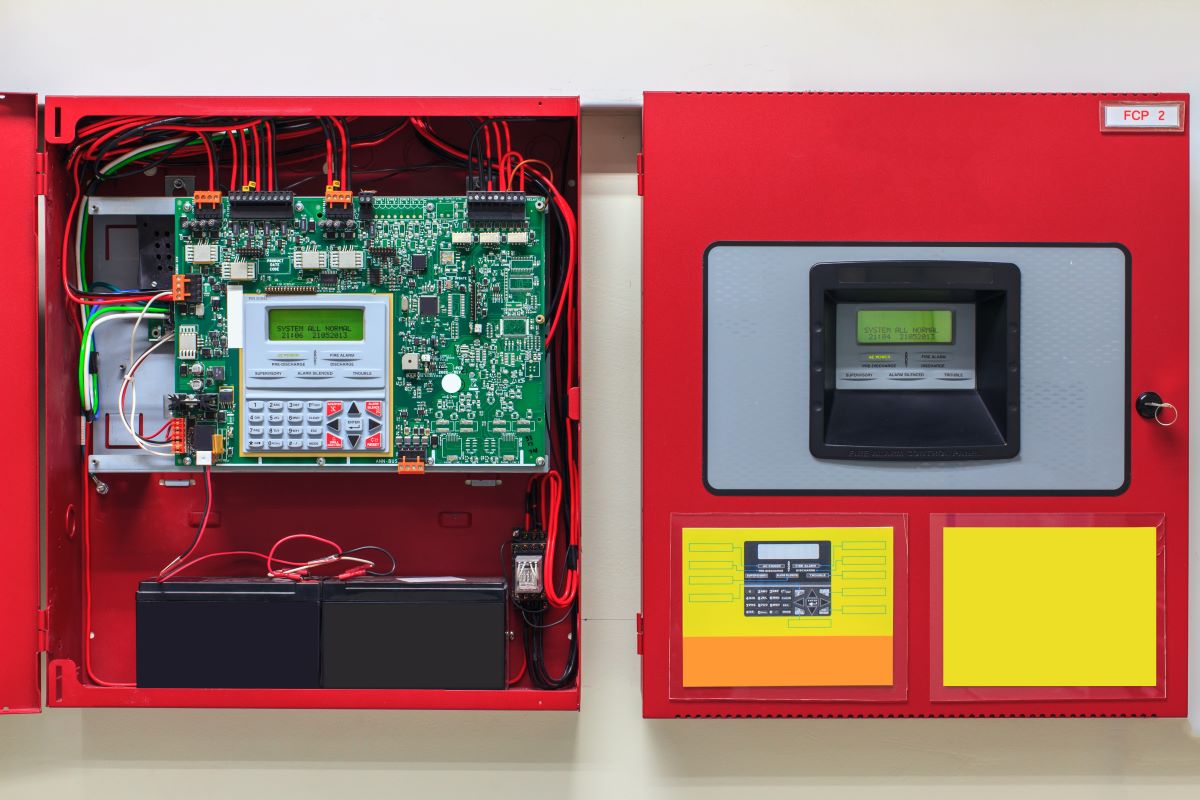
In the intricate tapestry of building safety, fire monitoring systems stand as vigilant guardians, offering a sophisticated layer of protection against the devastating impact of fires. This comprehensive guide serves as an introduction to fire monitoring systems, unraveling their essential components, functionalities, and the pivotal role they play in ensuring a swift and effective response to fire threats.
- Understanding the Essence of Fire Monitoring Systems
A fire monitoring system is a network of interconnected devices and technologies designed to detect, analyze, and respond to potential fire hazards. These systems are meticulously engineered to safeguard lives, property, and assets by providing early warnings and facilitating rapid intervention during fire emergencies.
- Components of a Fire Monitoring System
A robust fire monitoring system comprises a variety of interconnected components, each playing a specialized role in the detection and response process:
- Smoke Detectors: These devices are sensitive to smoke particles, one of the early indicators of a fire. Smoke detectors play a pivotal role in triggering alarms and initiating response protocols.
- Heat Sensors: Designed to detect changes in temperature, heat sensors provide an additional layer of detection. They are particularly effective in environments where smoke detectors, such as kitchens or dusty spaces, may yield false alarms.
- Flame Detectors: These specialized sensors respond to the visual aspects of flames. Flame detectors are essential in scenarios where traditional smoke detectors may be less effective, such as open spaces with high ceilings.
- Gas Detectors: In industrial settings or areas prone to specific gas hazards, gas detectors are integrated into fire monitoring systems to identify and alert occupants to the presence of harmful gases.
- Intelligent Detection and Analytical Capabilities
Modern commercial fire alarm monitoring systems are not merely reactive but endowed with intelligent detection capabilities and analytical prowess. These features elevate their effectiveness in distinguishing real threats from false alarms, minimizing disruptions and ensuring a rapid response when needed.
- Multi-Criteria Detection: Advanced systems employ multi-criteria detection, considering factors such as smoke density, heat levels, and environmental conditions. This multi-faceted approach enhances the system's accuracy in identifying potential fire hazards.
- Machine Learning Algorithms: Some fire monitoring systems incorporate machine learning algorithms that continuously analyze data patterns. These algorithms can adapt and learn over time, improving the system's ability to differentiate between normal environmental changes and actual fire threats.
- Early Warning Systems: Intelligent fire monitoring systems provide early warning capabilities, enabling swift responses at the initial stages of a fire. Early detection is critical in minimizing the impact of fires and facilitating efficient evacuation procedures.
- Integration with Building Management Systems (BMS)
The effectiveness of fire monitoring systems is amplified when integrated seamlessly with Building Management Systems (BMS). This integration allows for a centralized and coordinated approach to safety and security within a building.
- Centralized Monitoring: Integrated systems provide a centralized platform for monitoring various safety and security components, including fire monitoring. This centralized view enhances situational awareness and facilitates more informed decision-making.
- Automated Responses: In the event of a fire threat, integrated systems can trigger automated responses. For example, ventilation systems can be adjusted to control smoke spread, and access control systems can initiate lockdown procedures for specific areas.
- Data Sharing for Informed Responses: Integration enables data sharing between fire monitoring systems and other building systems. This shared data contributes to informed responses, giving emergency responders real-time insights into the evolving situation.
- Communication and Notification Protocols
Communication lies at the heart of effective fire monitoring systems. These systems employ various communication protocols to ensure timely and accurate transmission of information to both occupants and emergency responders.
- Audible Alarms: Traditional audible alarms remain a fundamental component, alerting occupants to the presence of a fire. Sirens, bells, or other audible signals are strategically placed throughout a building for maximum coverage.
- Voice Evacuation Systems: In addition to audible alarms, some systems incorporate voice evacuation capabilities. Clear and intelligible voice messages provide specific instructions to occupants, guiding them through evacuation procedures.
- Visual Notification Devices: Strobes, flashing lights, or LED displays are integrated for visual notifications. These devices are essential in environments where audible signals may not be effective, such as noisy industrial settings or spaces for individuals with hearing impairments.
- Remote Monitoring and Cloud-Based Solutions
The advent of technology has ushered in the era of remote monitoring and cloud-based solutions for fire monitoring systems. These innovations bring a new level of accessibility, flexibility, and efficiency to building safety.
- Remote Monitoring: Cloud-based solutions enable remote monitoring of fire monitoring systems. This capability allows facility managers, security personnel, and emergency responders to access real-time data from any location with internet connectivity.
- Data Storage and Analysis: Cloud platforms facilitate secure historical data storage and support data analysis. This data can be utilized for performance assessments, compliance reporting, and identifying patterns or trends related to fire incidents.
- Automatic Software Updates: Cloud-based systems often include automatic software updates, ensuring that fire monitoring systems remain current with the latest features, security patches, and regulatory requirements.
- Future Trends and Innovations in Fire Monitoring
As technology continues to evolve, the future of fire monitoring systems holds promising trends and innovations. These may include advancements in sensor technologies, increased integration with smart building ecosystems, and the development of predictive analytics to anticipate fire risks before they escalate.
A Safer Tomorrow Begins with Vigilance Today
In conclusion, fire monitoring systems represent a cornerstone of modern building safety. Their intricate design, intelligent detection capabilities, and seamless integration with other building systems contribute to a comprehensive and proactive approach to fire prevention and response. By understanding fire alarm monitoring systems' fundamental components and functionalities, we empower ourselves to create safer environments, safeguarding lives and property. To better understand what your system needs, contact the professionals at Koorsen Fire & Security today!


